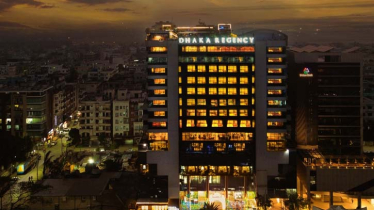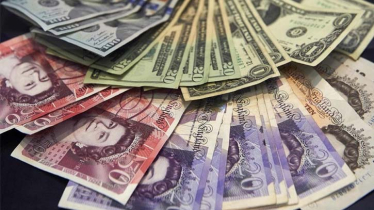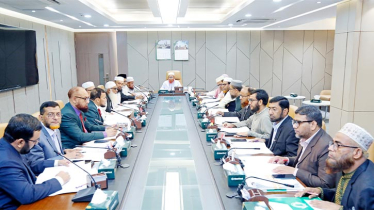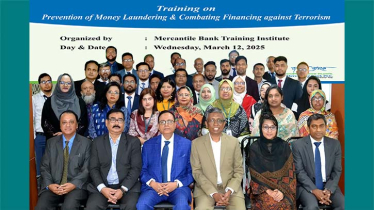
Photo: Messenger
Anarchy has been going on for several years over sacrificial animals’ raw hide. Even though the prices of leather products are increasing in the country and abroad, the marginal sellers do not get fair prices for raw hide. Consumers at the grassroots level also suffer huge losses. Even if the government fixes the price of leather, this anarchy cannot be stopped. In anger, many buyers are seen burying the leather in the ground.
This time, tannery owners and general leather traders are facing more problems as the banks are not giving any loans in the leather sector. Due to this, they are not able to plan properly with the raw hide. If the loan is not disbursed in special facilities, there will be a serious negative impact on raw hide collection, said stakeholders.
Banks used to give loans to the leather industry at a concessional rate of 2 per cent on the occasion of Eid-ul-Azha. This time, as the banks concerned wanted to give a loan of only Tk 270 crore, the businessmen rejected it. So, it is believed that the loan will not be given in this sector in the end.
According to Bangladesh Bank sources, in 2023, banks’ loan allocation for the leather sector was Tk 259 crore. In 2022 it was Tk 443 crore, in 2021 it was Tk 610 crore, in 2020 it was Tk 735 crore and in 2019 it was Tk 1,800 crore. 24 per cent of this loan is from state-owned banks.
It is known that Bangladesh Tanners Association (BTA) has around 800 members. The amount of loans that banks want to give is insufficient at once. About 35 per cent of raw hide collected at the time of sacrifice is wasted due to a lack of proper storage. $113 million of foreign exchange came from this sector in the last financial year.
However, the instability that was created every time due to determining the price of raw hide in square feet will not be created due to determining the price of leather as a piece, said Shaheen Ahmed, chairman of Bangladesh Tanners Association (BTA).
He said, “This time, there will be no instability with the price of raw hide. Because we have fixed the price. Earlier, we used to determine in square feet, now we have determined as pieces.” He also said, “This time, we have fixed the price of each piece of cowhide at Tk 1,000 inside Dhaka and Tk 1,200 outside Dhaka. However, it should be of the good quality. If the raw hide is saltless, it will cost Tk 850 to 900.”
Commenting that 85 to 90 lakh animals may be sacrificed, Shaheen Ahmed said skilled workers are not available for proper skinning and preservation. “This causes a loss of about Tk 1,500 crore to the leather sector every year.”
He further said, “Salt is not given properly, so the raw hide is damaged. On the day of sacrifice, everyone is busy with the meat, but we leave the raw hide. It destroys a lot of raw hide. As a result, we are losing huge amount of foreign currency. So, we should preserve the raw hide with caution.”
Meanwhile, the country has produced a bumper crop of salt this year. At least 14 times the amount of salt needed to process the skins of animals sacrificed on Eid-ul-Azha is stored. The price of salt is also lower this year than last year. At the retail level, the price of salt per kg is lower by at least Tk 2. All in all, traders think that there is no fear about salt in the sacrifice. Rather, they are seeing the possibility of preserving leather at the individual level as the price of salt is low.
According to Bangladesh Small and Cottage Industries Corporation (BSCIC), the country produced a record 24 lakh 37 thousand 890 tonnes of salt in the fiscal year 2023-24, which is the highest in the last 63 years. The production of salt this year is more than last year by two lakh five thousand tonnes. At present, the stock of salt is 14 lakh 80 thousand 469 tonnes.
BSCIC information also says that compared to last year, the price of salt used in leather has decreased by Tk 2 per kg. Last year, the average price was Tk 19.50 per kg, which is selling at Tk 17.50 this year. Salt mill owners also said that usually one to one lakh 25 thousand tonnes of salt is required for sacrifice. This time the demand for salt in the sacrifice is almost the same. Demand for salt was estimated to be similar last year as well. By combining these data with BSCIC data, it is seen that the salt reserves in the country are about 14 times of this demand.
Nurul Kabir, president of Salt Mill Owners Association, told The Daily Messenger, “There is enough salt in the country this year. There is no shortage of salt around Eid-ul-Azha. Salt is being sold at Tk 12 to Tk 13 per kg at mill gate in Chattogram.”
Tipu Sultan, general secretary of Bangladesh Hide and Skin Merchant Association, an organisation of raw leather traders, said that the price of salt is within reach. “The price of salt is also lower than last year. This time, there is no risk of skin damage due to lack of salt.”
Messenger/Disha








